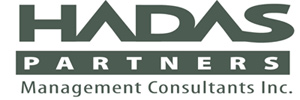“We’re going to have to let some people go.”
Of all the organizational change management requests, this is the most uncomfortable.
This request typically comes up in situations where a company is acquiring/merging or is outsourcing. In these situations there is a drastic cultural and organizational change. Thankfully, this request does not come up that often.
There are three questions that come up when it comes to leading change on these initiatives:
- What is the process, or the steps, of deciding which people to keep and which to let go?
- What is the approach, or the “how to”, in handling this sensitive situation?
- Why would an OCM lead or consultant do this work if it is so depressing and difficult?
The Steps
Because of the sensitive nature of this type of change, you need a very clear and defined process. Below are the steps we use in these engagements:
- Define what you need in the people you want to keep (knowledge, skills, behaviours)
- Compare that to who you have now and identify the gaps
- Decide how you are going to close the gaps
- Develop a plan to implement this change and how you are going to communicate it, and implement the plan
Define what you need
Some clients have tried to skip this step or keep the definition to a high level (i.e., “we want people who can work with each other” (?)). That’s a mistake. If you don’t clearly define what you want, you will get something you don’t want.
These initiatives are a chance at a re-set. They are an opportunity to fix some long-standing ills and to bring in some new approaches and ideas. A company should really treat them as such.
 You will need to define what knowledge will be required. In an acquisition, for example, what system is the acquiring company using? People being brought over will need to learn how to use that system if theirs was different.
You will need to define what knowledge will be required. In an acquisition, for example, what system is the acquiring company using? People being brought over will need to learn how to use that system if theirs was different.
In addition, you will need to identify what skills will be needed. If the company being acquired is from a different country you may need to prove that the people in your company have the skills and maybe certifications to support or oversee the incoming employees.
Finally, you will need to define the behaviours you want going forward. In the case of an outsourcing program, for example, you want to make sure the individuals remaining have the collaboration and communication skills to work with people from a different country, culture and time zone. Having individual performers who are rigid and lack EQ will cause you big problems, no matter how good they are technically.
Identify the gaps
For all intents and purposes, there are four gaps you need to assess:
- Knowledge gap – new or changed information that an individual needs to understand. Examples are understanding how to operate different technology or carry out new tasks.
- Behaviour gap – new habits required to execute a sequence of tasks so that the business works as intended. An example is the need to run a report on a regular basis at a certain time of day or week, as opposed to on an ad hoc or as needed basis. Another example is a new requirement to complete so many sales calls per day, not just per week or month.
- Skills gap – additional experience-based knowledge to perform a new function. For example, this could be specific finance experience or certification for someone in distribution who needs to analyze and prepare new financial reports.
- Ability gap – requirement for different innate characteristics. An example is the need for individuals to plan and forecast demand (instead of need to rapidly react to shortages)
The outcome here should be a clear mapping of individuals to the gaps, usually on a table or spreadsheet.
Closing the gaps
The type of gap determines what you will need to do to close it:

- Knowledge gap: As you may have guessed, this is the easiest gap to close. This requires providing the individual with the relevant information together with an opportunity to develop basic competency. Examples are: Training; Education Sessions/Events; Communications.
- Behaviour gap: Although more difficult, this gap is still relatively easy to close. In addition to providing the relevant information, this requires measuring how the individuals consistently adhere to the new expectations. Examples are: On-the-Job Training with reviews/ feedback; Performance Management; modifying reporting relationships through Organizational Design.
- Skills gap: This gap is more difficult to close. Simply, someone either has experience, or they don’t. Examples of how this gap can be closed is giving the individual opportunities and time to develop the expertise (or get certified) through additional Formal Education/ Certification; moving someone into the position from elsewhere in the organization through Staff Reallocation; or, through Recruitment.
- Ability gap: This is by far the most difficult gap to close. Arguably, it’s not a gap you can close, at least not from the individual’s perspective – inherent characteristics are part of how a person is hard-wired. But you need to close the gap from an organizational perspective. Examples of how are: Staff Reallocation; Recruitment; and finally Terminations and Outplacement.
Develop an Implementation and Communication Plan, and implement it
This may sound like a straight forward project management exercise, but in these situations you have to add another element: the retention strategy and plan.
 The main reason is that as soon as rumours start to spread you face the risk of losing your best and brightest. By definition, these are the most marketable individuals, and they will not spend too long mired in uncertainty. So you need a retention strategy with these objectives:
The main reason is that as soon as rumours start to spread you face the risk of losing your best and brightest. By definition, these are the most marketable individuals, and they will not spend too long mired in uncertainty. So you need a retention strategy with these objectives:
- Mitigate the “flight risk” of your most valuable and marketable employees
- Make sure you retain some select individuals until the transition is complete, which may be between several months to a few years
- Motivate those that remain to help them overcome ‘survivor’s guilt’ and get back to being fully productive
There is not enough room in this blog to get into details of what the contents of a good retention plan should be. But developing this strategy requires analyzing the types of employees you want to keep and for how long. This is in addition to the gap analysis covered above.
Approaching these sensitive situations
More than any other OCM problem, this one requires an abundance of respect and empathy. It helps if, as a PM or consultant, you were ever on the receiving end of one of these initiatives.
It is important to constantly keep in mind that the solution to this business problem will have real life negative impacts on people’s lives, their sense of self-worth, and their families. You should use this awareness to guide management’s decision-making so that business results and personal impacts are balanced.
The vast majority of senior managers do want to treat their people properly. The reality is that the financial and operational pressures they are under can often make it look like their decisions are heartless.
By focusing on their desire to be decent people first you can help guide their decisions through the steps.
Reason for doing these projects
Being a change lead on these projects is difficult. It can be emotionally draining. After all, the people we interact with as part of this process, and often get to know and like, many times end up on the short end of the retention lottery. It’s hard not to feel partially responsible and to some degree, guilty.
However, the way I personally look at it, is that this situation is a consequence of a business decision over which I had no control. Therefore all I can do is improve an already negative situation.
By being the change lead I can identify options that will leave those most impacted better off than they otherwise might have been. I can use my interpersonal skills to influence management to be more generous and considerate than they might have planned.
Without feeling that I can contribute positively in some of these people’s lives, these projects would not be worth doing. The money would be poor compensation, at least for me and the colleagues I work with.











